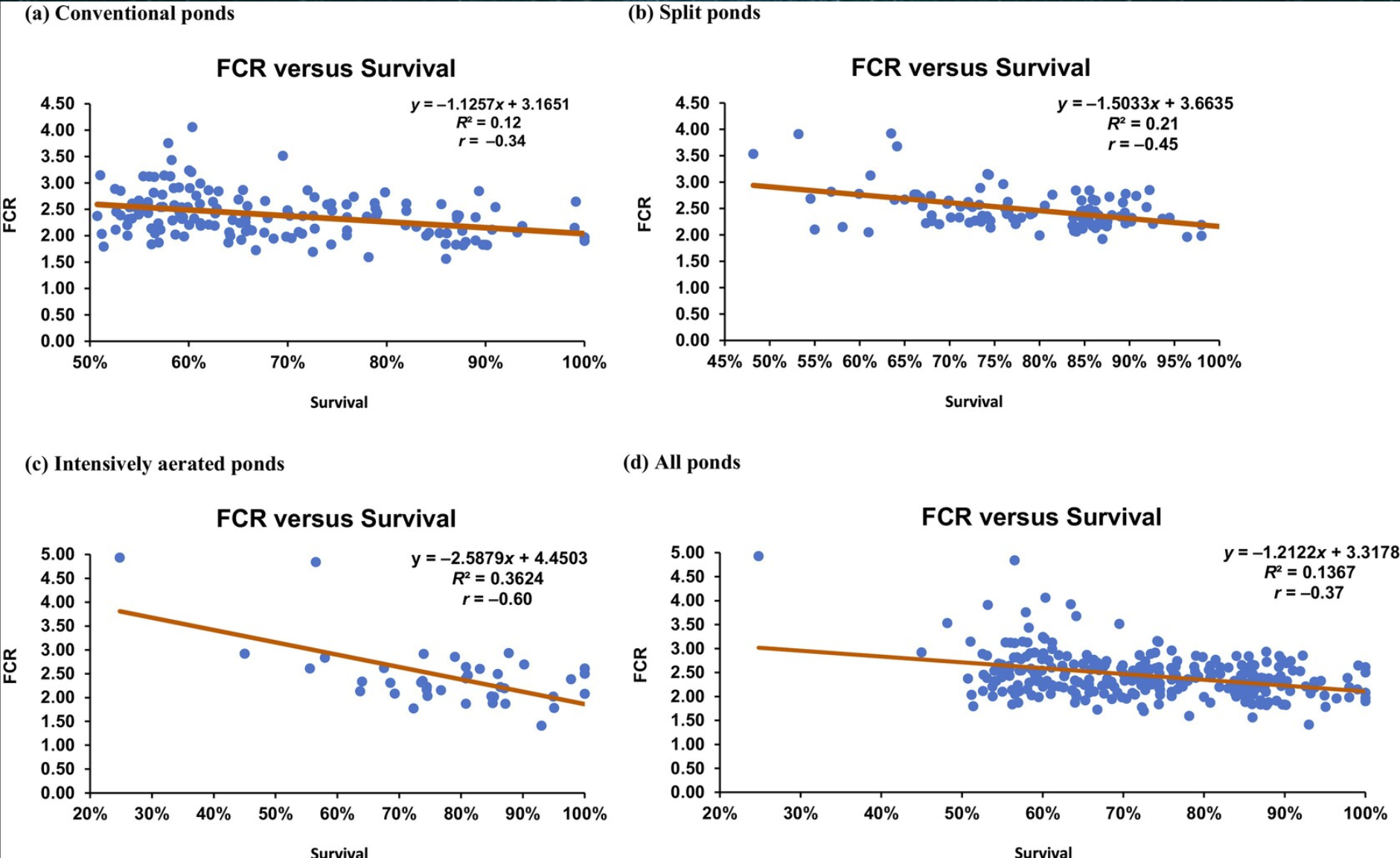Courtesy of NAA:
A nine-author team has dug deep into Feed Conversion Ratio (FCR) data. They noted FCR is widely used as a: 1) measure of feed use efficiency in commercial aquaculture production and research, 2) metric for publicly mandated environmental regulation and 3) proposed numeric standard for voluntary ecolabels. Surprisingly, they found little work has focused on the factors that affect FCR in plankton-based, commercial ponds despite the widespread use of FCR as a production metric.
This article summarizes FCR data from university research verification programs conducted on U.S. catfish farms and databases developed from commercial farm records. The relevant research literature is synthesized with respect to factors that affect FCR. U.S. catfish is used as a case study because pond-level data from verification trials (Extension/research-led on-farm trials of best available science) and commercial farm records are available. While specific to U.S. catfish production, the analysis provides insights into factors affecting FCR that likely apply to other pond-based aquaculture species.
Commercial verification of pond data showed:
- Significant variation in FCR (coefficients of variation from 1% to 47%) among ponds with similar stocking, feeding, and aeration rates.
- Significant effects of survival on FCR.
- No significant effects on FCR of yield, feed type, management, or production system.
Improvements in FCR would occur with improved survival that requires improved management of federally protected fish-eating bird populations and development of additional, effective vaccines for diseases.

Commercial farm dataset, relationship of survival on feed conversion ratio (FCR) for (a) conventional ponds; (b) split ponds; (c) intensively aerated ponds; and (d) all ponds combined.
In summary, FCRs were found to not exhibit the degree of reliability and consistency required for use as an effective metric or numeric standard for nongovernmental or governmental regulatory purposes. Use of FCR to govern farm management is unlikely to lead to behavioral changes by farmers.
To read or download the paper, click here.
Stone, N. M., Engle, C. R., Kumar, G., Li, M. H., Hegde, S., Roy, L. A., Kelly, A. M., Dorman, L., & Recsetar, M. S. (2024). Factors affecting feed conversion ratios in US commercial catfish production ponds. Journal of the World Aquaculture Society, 55(3), e13053. https://doi.org/10.1111/jwas.13053


Recent Comments